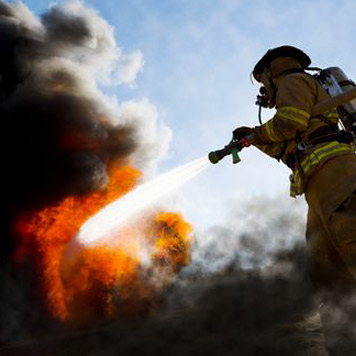
Some of the most rewarding jobs can also be hazardous for your health. Even with proper training and workplace safety practices, some careers have a high probability of causing harm. There are risk classifications used to determine the level of impact such as exposure to infections, diseases, contaminants, radiation, conditions, and more. Here is a look at the most hazardous careers in the job market.
1. Fireman
This position ranks among the highest with exposure to hazardous materials including fire and smoke. Conditions are another area of concern with unsafe buildings leading the way. Individuals that engage in this profession are continuously training to stay current on certifications that address safety. An emergency and disaster management degree can be found among most.
2. Histotechnologist
Preparing slides from a variety of medical tests including blood and biopsies is a hazardous occupation. The introduction of diseases and infections runs high here. Following best practices in laboratory settings is critical when handling and storing specimens. Attention must be paid to wearing the proper equipment such as gloves and goggles.
3. Wastewater Treatment Operator
A degree in occupational safety provides skills that mitigate vulnerability to a litany of chemicals and human waste. This is coupled with mandates and industry safety rules to ensure workers are protected from these types of incidents. EPA is an active government agency that has continuous inspections and verify employee adherence.
4. Fisherman
Danger is synonymous with jobs on the ocean. A plethora of equipment and less than favorable weather conditions is the perfect recipe for the potential for accidents. Fishing gear including nets should be stored safely at all times. Due to the unpredictable forecasts, knowing how to properly use supplies are paramount here as well.
5. Steel Worker
While exposure to hazardous materials in this job is low, there is a high occurrence of falling, cuts, and broken bones at a steel plant. Workers are susceptible to harm in working conditions that include rigs and cranes. Heavy equipment, sharp tools, and a variety of saws add a heightened factor of danger to work environments. Hard hats, utility gloves, goggles, and steel toe boots are required to enter a job site.
6. Radiology Technician
The world of medicine has evolved to include many high-tech machines such as MRI and CT Scans that expose professionals to hazardous conditions. It is important to comply with standards set by manufacturers when operating each apparatus. This includes standing behind lead platted windows and barrier walls. Employees should also wear badges that monitor radiation levels.
The inherent hazardous risks associated with each job reviewed makes workers susceptible to bodily harm. Agencies such as OSHA and EPA were established to develop, monitor, and manage safety guidelines to minimize the intrinsic concerns. Individuals that chose these career paths will fare well if they adhere to the rules and measures in place.
This guest post was written by Brooke Chaplan. Brooke Chaplan is a freelance writer and blogger. She lives and works out of her home in Los Lunas, New Mexico. She loves the outdoors and spends most her time hiking, biking and gardening. For more information contact Brooke via Twitter @BrookeChaplan.

I’d also add basically anything that messes up your circadian (sleep) rhythm, as good sleep is just so crucial for good function and health.